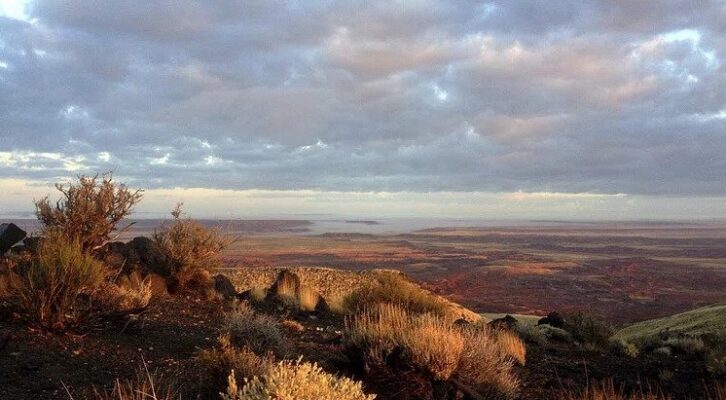
Notions of "Wilderness:" Nine Essential Books About the American Frontier
Peter Stark Recommends Debra Magpie Earling, William Kittredge, Willa Cather, and More
Like “The Wilderness,” whatever exactly constitutes “The Frontier” depends largely on where you stand in relation to it. Beginning with the Jamestown arrivals in 1607 in what’s now Virginia, America’s British colonizers regarded most everything west of them as “the wilderness”—or, as William Bradford, the Puritan leader aboard the Mayflower in 1620 put it, “what could they see but a hideous and desolate wilderness, full of wild beasts and wild men.” Many newcomers believed that Satan lurked out there, too.
From the European colonizers perspective, “The Frontier” became the forefront of white settlement in the wilderness—one that supposedly brought Christianity and civilization to these pagan realms. If you were a member of a Native tribe in North America, however, what the Puritans called a wilderness was your home that the Great Spirit had provided with all the abundance you needed. The tribes continually were forced to escape the settler’s “Frontier”—the edge of a wave of land grabs, extermination, and cultural destruction driving Indigenous people westward like the burning edge of a prairie fire. After three centuries of this, the settlers had claimed 95 percent of the lands once belonging to Native peoples.
In the same way, depending on one’s perspective, any list of “essential” books about the American frontier is highly subjective, and so is this. For an overview, I recommend Roderick Frazier Nash’s seminal Wilderness and the American Mind (originally published in 1967). A professor of history and environmental studies, in addition to having worked as a whitewater raft guide and in other outdoor pursuits, Nash traces how Euro-American notions of “wilderness” have evolved since those first Puritan landings. Since Nash’s 1967 publication, the concept of wilderness has been further explored by other thinkers, including by Native writers, but his book provides a foundational perspective on what constitutes “The American Frontier.”
More briefly, and in somewhat chronological and geographical order (East to West), here is more of my essential reading about the Frontier:
*
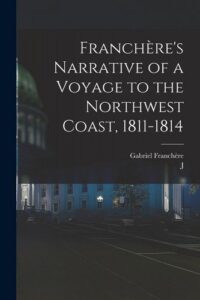
Gabriel Franchère, Narrative of a Voyage to the Northwest Coast, 1811-1814
This is one of my all-time favorite frontier narratives by someone who was there, observant, educated, and eloquent (even in translation). It is also an example of why some of the earliest and best frontier narratives were written by educated foreigners, as the great majority of American frontier settlers wrote poorly, if at all. In 1810, as a young Montrealer, Franchère signed on with the vast expedition New York fur baron John Jacob Astor sent to establish the first American colony on the West Coast. Historically significant, the expedition was a vast disaster at the time but for later generations yielded a trove of eyewitness accounts and amazing survival stories, of which Franchère’s is one. My own book about Astor’s grand, globe-circling trade scheme, Astoria: John Jacob Astor and Thomas Jefferson’s Lost Pacific Empire (2014), owes much to Franchère’s and other personal accounts. Another favorite “Astorians” memoir is one by a young, wealthy Columbia University dropout who thought a frontier adventure might offer an amusing break from city life. He was so wrong. If you want to hear a would-be frontiersman whine about frigid toes and ferocious mosquitos—not to mention the risk of imminent death around every bend—Alfred Seton’s journal will boost your tender-foot spirits.
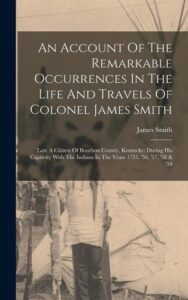
What has become mythologized in American history as “The Wild West” actually had its origins in “The Wild East.” This was the country beyond the Appalachians in the Ohio Valley. My essential frontier reading list includes a riveting first-person account of a young man’s capture by Native warriors during the French and Indian War (1755-63), much of which centered on the Ohio Valley. An Account of the Remarkable Occurrences in the Life and Travels of Colonel James Smith during his Captivity with the Indians, in the Years 1755, ’56, ’57, ’58, & ’59 will surprise American readers steeped in the notion of the frontier’s “fierce Indians.” After a harrowing introduction to the tribe by “running the gauntlet,” Smith is lovingly adopted to replace a young, fallen warrior. My favorite anecdote occurs when an elder Native hunter chastises Smith for his stinginess in neglecting to offer a visiting hunter the best victuals that they have in their camp (meaning bear’s oil and maple sugar, rather than a simple roast venison). “You have behaved just like a Dutchman,” the elder rebukes him, meaning a white settler. “Do you not know that when strangers come to our camp, we ought always to give them the best that we have?” The elder said he could excuse Smith, because he was still young. “But,” recounted Smith, “I must learn to behave like a warrior, and do great things, and never be found in any such little actions.”
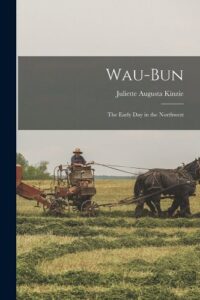
John H. Kinzie (Juliette M. Kinzie), Wau-Bun: The “Early Day” in the North West
Moving with the frontier westward to the Upper Great Lakes, one encounters the writings of Mrs. John H. Kinzie (aka Juliette M. Kinzie) and her autobiographical, Wau-Bun: The “Early Day” in the North West. As the well-educated and Connecticut-born wife of a white fur trader and Indian agent, Kinzie carefully observed life and events in the early 1830s at today’s Portage, Wisconsin among the Winnebago (or Ho-Chunk) nation. She sympathized with the plight of Indigenous people as their land was wrenched away. Another work of hers based on her relatives’ eyewitness accounts, Narrative of the Massacre at Chicago, August 15, 1812, and of Some Preceding Events, contains a vivid image that resonates strangely today—the white ladies at the Chicago portage fur post (Fort Dearborn) obliviously playing badminton as white-Native tensions soar around them in the run-up to the War of 1812.
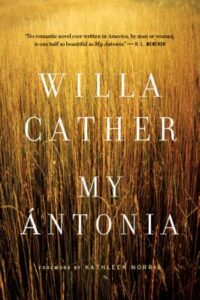
Willa Cather, My Ántonia
After Native tribes in the Midwest had been mostly vanquished, vast lands opened to farming. One of Willa Cather’s most acclaimed novels, My Ántonia (1918), portrays the life of white settlers—”pioneers,” as known in American frontier mythology—on the Nebraska plains. Ántonia’s family of Bohemian immigrants arrives in the late 1800s to find that the homestead they purchased offers no home in the usual sense but rather the common pioneer shelter known as a “dugout” or “sod house”—built of blocks of prairie sod or simply an earthen cellar roofed over.

James Welch, Fools Crow
As a counterpoint to this world of struggling white “sodbusters” on the Great Plains that recently had supported millions of buffalos and tribes who hunted them, one could read James Welch’s novel Fools Crow (1986). As a member of the Blackfeet Nation (located in today’s Montana), Welch immerses the reader in the world of a young Blackfeet male coming of age in the years around the Civil War as white hunters, soldiers, and settlers press in around his traditional way of life. The late Welch’s work generally, and his Fools Crow in particular, have inspired a new generation of younger Native writers.
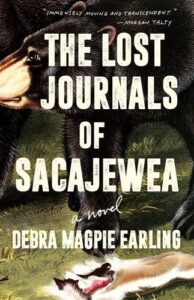
Debra Magpie Earling, The Lost Journals of Sacajewea
Among this generation is Debra Magpie Earling, of Salish heritage, whose recent novel The Lost Journals of Sacajewea, is a lyrical vision of the familiar story of Lewis and Clark’s Corps of Discovery reimagined from the perspective of the young Lemhi Shoshone woman who served as their guide.
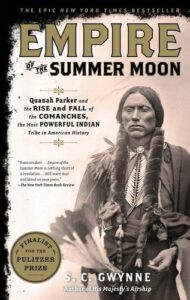
Much has been written about the Plains Indian Wars, an era that Hollywood found visually compelling (and ready-made for dramatic manipulation) with its wide horizons and charging horses and its doomed U.S. Calvary officer, George Armstrong Custer. Some of the more recent bestsellers from this era include Empire of the Summer Moon: Quanah Parker and the Rise and Fall of the Comanches, the Most Powerful Indian Tribe in American History by S.C. Gwynne and The Heart of Everything That Is: The Untold Story of Red Cloud, An American Legend by Bob Drury and Tom Clavin. Author Michael Punke, who wrote The Revenant on which the Leonardo DiCaprio film was based, recently published another historical novel, The Ridgeline, about a fateful encounter in 1866 in Wyoming’s Powder River Valley between U.S. Army Colonel Henry Carrington and Red Cloud and Crazy Horse. Punke’s work gives fascinating insights into the thinking and strategy on both sides of the conflict.
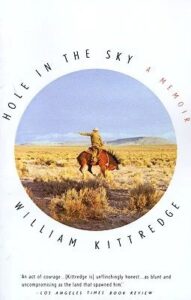
William Kittredge, Hole in the Sky
Finally, my list about “The Frontier” would include something by the late William Kittredge, a personal friend who inspired many younger writers to write about the American West. Several generations of the Kittredge family in eastern Oregon had carved out a ranch the size of Delaware by fencing its ranges and draining its wetlands to carry more and more cattle. Ultimately, instead of embracing the great family spread, Kittredge, in books like Hole in the Sky and Owning It All, faces up to the environmental and emotional trauma this pioneering spirit wrought. As Hole in the Sky’s jacket copy succinctly puts it, Kittredge gives “an honest reckoning of the American myth that drove generations of Americans westward—and what became of their dream after they reached the edge.”
__________________________________

Gallop Toward the Sun: Tecumseh and William Henry Harrison’s Struggle for the Destiny of a Nation by Peter Stark is available from Random House, a division of Penguin Random House, LLC.
Peter Stark
Peter Stark is an adventurer and historian. Born in Wisconsin, he attended Dartmouth College and took a master's in journalism at the University of Wisconsin. He set out to write adventure-travel articles about Greenland, Tibet, Africa, and elsewhere for magazines such as Outside, Smithsonian, The New York Times Magazine, and others. Based in Missoula, Montana, he now specializes in researching and writing historical accounts of early American explorers in wilderness settings and their contact with Indigenous peoples. His book Astoria, a New York Times bestseller in 2014 and finalist for a PEN USA literary award, told the epic story of the establishment of the first American colony on the West Coast, at the mouth of the Columbia River. His Young Washington (2018) was named a finalist for the George Washington Book Prize. He has recently completed a book about the struggle for the lands of the Midwest between the great Shawnee leader Tecumseh and the frontier governor (and later president) William Henry Harrison. Titled Gallop Toward the Sun, it will be published by Random House August 29th.



















